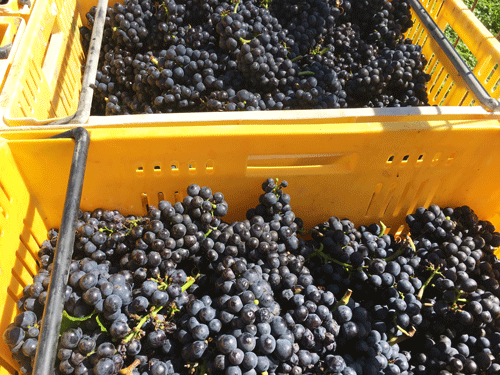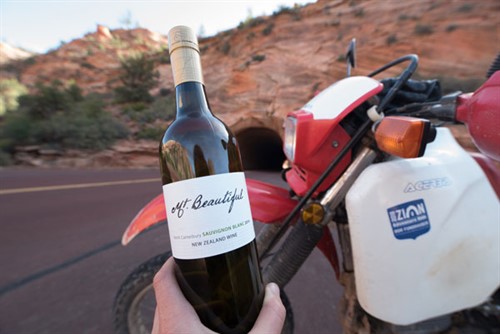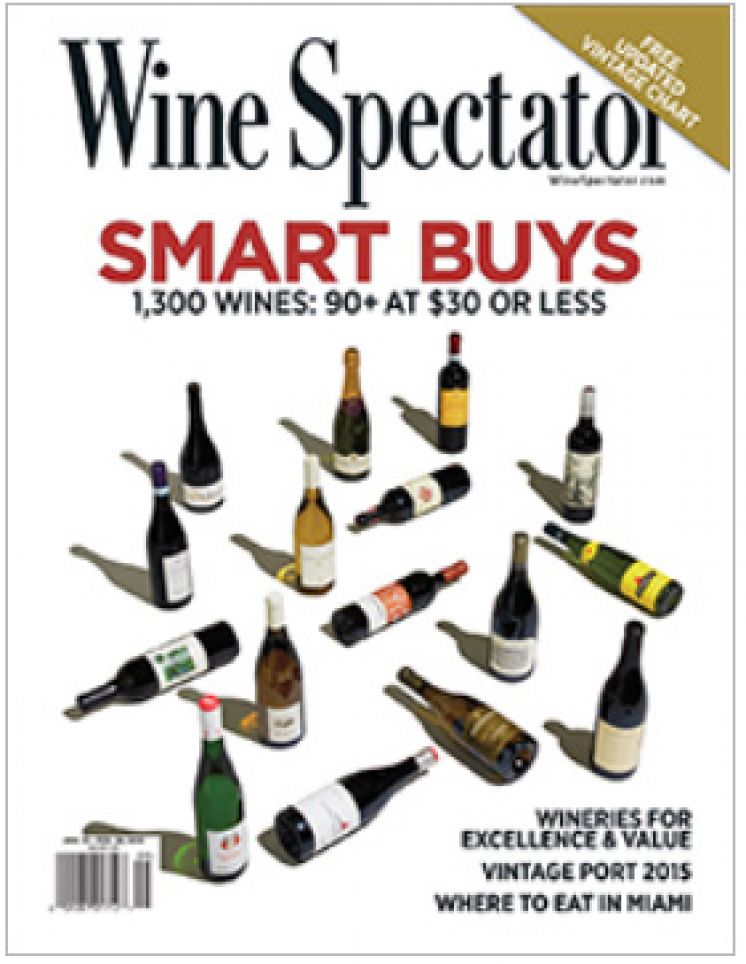Seth Buckley, Musings By the Glass, January 16, 2018 (photos: Seth Buckley)
Honolulu based wine blogger, Seth Buckley, who we met at the 2017 Wine Bloggers Conference selected our Mt. Beautiful Pinot Noir as his bargain wine of the week. Keep reading to see his suggested pairings and full "musings" including a little history on New Zealand as a winegrowing region.
Pairing:
Classic Pinot Noir pairings include salmon, duck and mushrooms. A local Hawaiian twist on these classics include furikake salmon, Cantonese roast duck and a sautéed Japanese mushroom medley.
My Musings:
This wine was a beautiful, luminous ruby red color and possessed fruit aromas of cherry, cranberry and blackberry with orange blossom, subtle earth and baking spice. On the palate, the wine wonderfully balanced fruit, earth and mineral elements, with soft tannins that provided structure and a long, lingering finish. An absolutely stunning and tremendously enjoyable wine.
Mt. Beautiful Winery is wonkish heaven. It’s founder, David Teece, is [obviously] an oenophile, but he doubles as a professor of Global Business and Economics at the University of California Berkeley’s Haas School of Business and has authored over 30 books. For me, trained in global business law and economics, I have discovered a new vinous exemplar. Hail to the geeks.
Mt. Beautiful also makes it easy to feel good about yourself while sipping your refreshing inebriating beverage. Committed to sustainable farming methods, holistic vineyard management and alternative bottle closure methods (which bottle closure lore I explored in this post), Mt. Beautiful ensures that its practices assist in safeguarding the picturesque landscape famous to New Zealand. The world needs more wineries like Mt. Beautiful (and regions like New Zealand) that wholeheartedly embrace and emphasize the importance of sustainable viticultural practices.
In Honolulu, procure as many bottles as you are physically able to carry from Tamura’s Fine Wine and Liquors.
Aotearoa: The Land of the Long White Cloud
While Côte-d'Or remains the gold standard, one of the most exciting New World regions for Pinot Noir, in my experience, lies on the outskirts of the Antarctic, in the Land of the Long White Cloud.
Bibles and grapevines were traveling companions to New Zealand, brought in the suitcases of Anglican missionaries in the early Nineteenth Century. Where there are missionaries, there is wine. Early local wines were a cheap proletarian drink that possessed few ardent admirers. Inebriation sufficient; craft not necessary. The fledgling industry was later disrupted by the Prohibition movement at the end of World War I, when temperance advocates denounced the inexpensive intoxicant as “vile Australian wine” and “Dally plonk,” pejoratively referring to the winemakers’ Croatian descent. Racism, patriotism, and temperance bundled into a short, succinct phrase. Well played, temperance movement.
Fortunately, the industry survived its early challenges, and has matured to become, in my opinion, one of the preeminent value wine regions in the world. With a re-focused strategy on quality rather than quantity, it is no longer difficult to procure well-crafted, high-quality vino in the Southern Hemisphere.
New Zealand, home to the southernmost vineyards in the world, is breathtaking in its natural beauty. Dense tropical and temperate forests, majestic mountain ranges, imposing volcanoes, and a craggy coastline constantly battered by the Pacific Ocean produce endless picturesque landscapes. It is naturally divided into two regions, the North and South Islands, each unique in culture, climate, and winemaking.
The South Island is a cool, maritime climate that benefits from extended, sunny summer days due to cloud dissipation and the earth’s axial tilt. Obliquity lends a helping hand. The Southern Alps, the tallest mountain range in the Southern Hemisphere, cause a rain shadow effect that shelters the vineyards from the prevailing westerlies generated in the Pacific Ocean. Vineyards find a weathered safe harbor in the east. On the downside, water is scarce and irrigation essential.
Midway along the eastern coast of the South Island is the capital city of Christchurch and the rolling, breezy plains of Canterbury, the home of Mt. Beautiful Winery. Canterbury’s vineyards are planted primarily in shallow, stony alluvial topsoil consisting of sand, limestone, schist and loam, overlaying deep free-draining glacial gravels from Jurassic periods long ago. These soils possess low-to-moderate fertility and absorb heat during the day that is slowly released throughout the chilly nights. Vine roots’ rocky heat regulators. Here the Burgundian varietals of Pinot Noir and Chardonnay thrive, alongside elegant and expressive Riesling and Sauvignon Blanc.
In a country where sheep residents outnumber their human counterparts 10 to 1, there is plenty of open range for farming and viniculture. Kiwis have made the most of it. Their wines are brilliant, expressive and unique. At every opportunity, I would unequivocally recommend exploring these wine regions and varietals. You will not be disappointed! And you can confidently commence exploration at Mt. Beautiful Winery ..."













































































